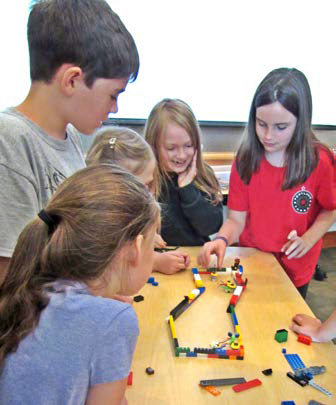How to Have Better Bedtimes
Bedtime is a predictably difficult time of day for many families. Kids are tired. Parents are tired. And parents may not have a lot left in their ‘emotional tank’ when bedtime rolls around, which is often when kids need the most support. If your child struggles with anxiety, has a history of difficulty separating and self-soothing, or is experiencing an increase in stress, needs around this time also might be higher. Additionally, if bedtimes haven’t gone well in the past, negative expectations can develop, and poor interactions could become a self-fulfilling prophecy (Jussim, 2001).
First, let me reassure you- you are not alone. Parents, and kids, are trying their best and difficulty around bedtime is a familiar story. Here are some tips and tricks to consider as you reflect upon some of the barriers to a smoother bedtime for your family. And remember, there are many reasons why bedtime could be difficult for kids, so consulting with their Pediatrician and/or seeking support from a mental health professional could be a great next step to rule out any underlying physical or mental health issues.
1. Practice good sleep hygiene
The American Academy of Sleep Medicine defines sleep hygiene as “a series of healthy sleep habits that can improve your ability to fall asleep and stay asleep.” Examples include keeping a good sleep schedule, having a consistent bedtime routine, making sure the bedroom is a relaxing space, turning off electronics at least 30 minutes before bedtime, and making sure kids are getting their nutritional and exercise needs met during the day (Hershner & Shaikh). Prioritizing good sleep for the whole family by practicing good sleep hygiene is a great first step. You might consider incorporating relaxation techniques into your child’s bedtime routine. A few of my favorite apps include Headspace for Kids, Smiling Mind, and Stop, Think, & Breathe, which have guided meditations that parents and kids can do together at bedtime to relax.
2. Solve solvable problems
If you’re stuck in a negative cycle of conflict (i.e., child refusal, power struggles, etc.) around this time, consider using Collaborative Problem Solving strategies to help your child identify barriers to success and elicit their help in solving the problem, once identified (thinkkids). This might sound something like, “I noticed brushing your teeth has been really hard lately, and my concern is that brushing your teeth is really important to stay healthy. Do you have any ideas on what’s making this so hard?” Engaging your child in these collaborative communication strategies sends the message that you’re on their team and gives them the benefit of the doubt by assuming something is getting in the way of their success vs. they are the problem (thinkkids). Also, getting your child’s input on the solution will increase their ‘buy-in’ and lead to a higher likelihood of the solution actually working. Parents are often surprised by their kids’ answers to these questions. Sometimes a different toothbrush can make all the difference.
3. Address attachment needs
If your kiddo struggles with anxiety or if there is stress around parent-child separation, you may consider strategies to address attachment needs. Attachment-based strategies are targeted at helping your kiddo internalize the warmth and soothing effect they get from a strong parent-child bond, so that they can self-soothe even when you are no longer physically with them. First, see if you can spend at least 10 quality minutes giving them your full attention and follow their lead on what they find soothing. Weighted blankets are also great tools that could help your child feel calm. Next, I recommend parents focus their attention on reconnecting with their child tomorrow morning vs. separating right now.
An example of this could be making a plan of something special you’re going to do together in the morning (this could be as simple as letting your kiddo help press the ‘on’ button on the coffee machine). Additionally, giving your child a small object that reminds them of you can act as a transitional object and can help ease that separation. Consider giving them an object that also smells like you (ex: a t-shirt), which can activate positive memories and emotions and have a soothing effect.
4. Keep it simple
As a rule of thumb, less is more around bedtime when it comes to commands. When emotions are high, kids often aren’t in the mental space to be taking in and processing a lot of verbal information. This can lead to non-compliance and an escalation of big emotions, which can frustrate parents and fuel cycles of interaction.
Focus on giving essential commands only and using ‘selective attention’ to not give too much attention to undesirable behaviors (UC Davis Health). Maximize the effectiveness of your commands by stating all commands positively (state what you do want from your child instead of what you don’t want), state commands as commands instead of questions (ex: please go brush your teeth vs. can you go brush your teeth?), and be specific with your commands (please put on your PJs vs. please go get ready for bed) to break complex tasks into simpler tasks (UC Davis Health). Be sure to follow up on each completed command with praise to encourage your child and keep the overall tone of the evening positive (UC Davis Health).
References:
Jussim, L. (2001). Self-fulfilling prophecies. International Encyclopedia of Social and Behavioral Science. (Pp 3830-13833). doi.org/10.1016/B0-08-043076-7/01731-9.
Hershner, H., Shaikh, I. (2001, August). Healthy Sleep Habits. AASM: Sleep Education. sleepeducation.org/healthy-sleep/healthy-sleep-habits.
Tahnk, J. L. (2001, January 15). 6 Mindfulness and Meditation Apps for Kids. Parents. www.parents.com/health/healthy-happy-kids/5-mindfulness-and-meditation-apps-for-kids.
Thinkkids. Collaborative Problem Solving. thinkkids.org/cps-overview.
UC Davis Health. PCIT. pcit.ucdavis.edu.





















